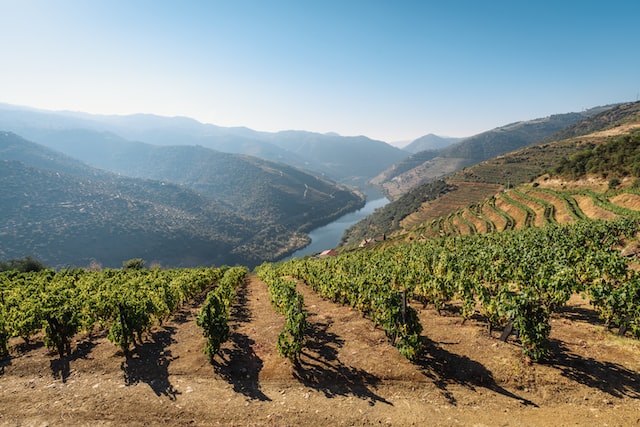October 10, 2022
John Sirabella
The Common Agricultural Policy (CAP) was established in 1962 by the European Economic Community to coordinate policies, support European farmers, and create a competitive European market in agriculture (Castilla 2020). CAP’s goals were to support producers and improve agricultural productivity by ensuring a stable supply of affordable food. However, in recent years, consumers have been unhappy with the policy and advocated for change. Their requests went unnoticed until the Ukrainian war and summer drought tragedies acted as catalysts for change by making the policy problem a global issue (Directorate 2022). CAP has been criticized for ignoring supply and demand rules, giving 30% of the European Union’s (EU) budget to 3% of the population’s farmers, spending 80% of the CAP budget on just 20% of farms, and for mismanagement as inflation increases food prices despite billions in taxes funding subsidies (DG Agri 2022). Listening to concerns, the EU’s new CAP is focused on increasing organic farming through investment in plant protein production, expanding the budget to subsidize more farms, and assisting producers to match demand.
The new CAP has four main objectives to meet consumer requests. CAP’s first objective is to put food on Europeans’ plates by providing food security (DG Agri 2022). The EU wants farmers to have stable food supplies at reasonable prices to prevent dependency on imports. This objective is possible with the EU’s singe agricultural market. This single market prevents each member state from having separate farming systems, which would cause volatile prices, a saturated supply, and hyper-competitive markets. CAP’s second objective is to protect rural communities (DG Agri 2022). The EU wants to establish training programs for farmers and assist young farmers. Also, subsidies will be oriented toward rural development by increasing the budget to cover a wider variety of farms with a push toward organic farming (Cervera 2022). Preserving rural farming is crucial as each year Europe has 2% fewer farmers, which is responsible for agricultural employment falling 25% over the last decade (Eurostat 2018). CAP’s third objective is to support quality and diverse European foods (DG Agri 2022). As a result, the EU has increased promotion of food safety and the development of organic farming and plant protein production (Cervera 2022). CAP’s fourth objective is protecting the environment while supporting development (DG Agri 2022). CAP’s environmental conditions for farmers include using less chemicals, protecting wildlife, and maintaining greenery and ponds. The EU’s emphasis on development is to prevent foreign dependence by decreasing reliance on food imports (Opportimes 2021).
The new CAP is designed to support the transition towards sustainable agriculture in the EU with an emphasis on results and performance. In terms of the environment, each country will meet environmental and climate action plans as any backsliding will be penalized, Green Deal targets will be met, and farmers will be more eco-friendly as their payments will be tied to satisfying stronger mandatory requirements. In terms of fairness, there will be more income support as EU countries must dedicate 10% of their payments to the redistributive income support system and producers will be pulling their weight as only complying farmers will receive EU support (Directorate 2022). Also, there will be an increase in the number of young farmers as EU countries must distribute 3% of their payments, and there will be heightened gender equality as women farmers will be prioritized (Directorate 2022). Boosting diversity in the farming sector is essential to furnishing a culturally unique variety of healthy crops and reducing obesity problems through the production of diverse and nutritious foods.
The new CAP seems like a great transition from the former program, but subsidizing farmers on this scale will have detrimental impacts. This mass subsidization distorts the world’s agricultural markets making it nearly impossible for farmers in developing countries to compete with European farmers (Agriculture and Rural Development 2022). As the EU places a high emphasis on ethics and morals, it seems contradictory that it disadvantages farmers from developing countries who can export their produce into Europe. Also, subsidization causes a massive waste of resources which does not correlate with their environmentally friendly image and results in high food prices for Europeans. Those who will benefit the most from CAP would not be as successful and profitable in open competition in the free market (Agriculture and Rural Development 2022).
In conclusion, the new CAP is expected to tighten the relationship between Europe and its farmers. CAP’s objectives focus on food security, protecting rural communities, promoting Europe’s quality and diverse foods, and protecting the environment while supporting development. The EU’S greener CAP will preserve Europe’s agriculture for future generations, make food more organic and sustainable, and prices more stable. Additionally, the promotion of diversity will increase the number of young people, women, and minorities participating in farming. Although the reformed CAP looks promising, it is imperative to consider the exorbitant costs associated with funding EU farmer’s, which hurts farmers from developing countries who cannot compete (Agriculture and Rural Development 2022). To conclude, the new CAP has the potential to revolutionize Europe’s agricultural market although funding needs to be reconsidered to meet modern conditions.
Further Reading
- New Common Agricultural Policy (CAP): Bringing the Dialogue – https://friendsoftheearth.eu/news/new-common-agricultural-policy-cap-bringing-the-dialogue/
- European Union: EU Common Agricultural Policy Reform – https://www.fas.usda.gov/data/european-union-eu-common-agricultural-policy-reform
- Farming Ministers Confirm CAP Reform Deal – https://www.consilium.europa.eu/en/press/press-releases/2021/06/28/farming-ministers-confirm-cap-reform-deal/
Reference List
Directorate-General Agri (2022). Agriculture and Rural Development. European Commission.
Directorate-General Agriculture and Rural Development. (2022). Key Reforms in the New CAP. European Commission.
Castilla, Junta. (2020). Common Agricultural Policy (CAP): History and Applications. Innovatione AgroFood Design.
Cervera, Marc. (2022). EU’s New Farming Policy Focuses on Future Food, Pushes to Propel Organics and Plant Protein. Food Ingredients First.
Directorate, General. (2022). The New Common Agricultural Policy: 2023-27. European Commission.
Eurostat. (2018). Farmers and the Agricultural Labor Force – Statistics. European Commission.
Opportimes, Redaccion. (2021). The World’s Largest Food Exporters and Importers in 2020. Opportimes.
